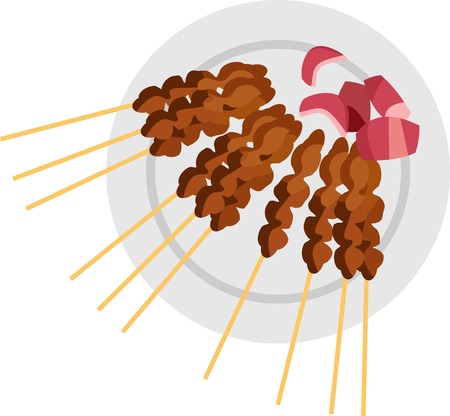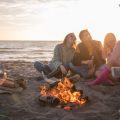Gathering Local Treasures: Sourcing Fresh Lobster, Crab, and Cockles
If you’ve ever dreamed of a classic British seaside adventure with your little ones, nothing brings the family together quite like hunting for local shellfish along the rugged coast. From Cornwall’s windswept harbours to Norfolk’s sandy estuaries, our coasts are brimming with some of the tastiest treasures—lobster, crab, and cockles just waiting to be discovered. Exploring bustling fish markets is always a joy for curious minds; children adore picking out their favourite crustaceans, and it’s a wonderful way to introduce them to the value of sustainable fishing. Chatting with friendly fishmongers, you’ll learn how to spot lively lobsters waving their claws and crabs with strong shells—signs they’re fresh from the sea. For cockles, look for those that are tightly closed and smell briny like an ocean breeze. If you’re feeling extra adventurous, why not don wellies and head to a tidal flat for a bit of cockling together? It’s a cherished British pastime that gets everyone giggling and muddy in the best possible way. So whether you’re filling your basket at the local quay or gathering shellfish as a family on the shore, these coastal ingredients promise both delicious meals and heartwarming memories by the campfire.
2. Setting Up Your Coastal Campfire
There’s something truly magical about gathering the family for a traditional British coastal campfire, with salty breezes and the sound of the waves as your backdrop. Before you dive into cooking lobster, crab, or cockles, it’s important to build your campfire both safely and in true British style. Here are some classic tips and traditions to help you create a warm, welcoming spot for seaside feasting.
Choosing the Right Spot
First, always check local regulations—many UK beaches have rules about where and when fires can be lit. Once you’ve found a suitable location, look for a sheltered area away from dunes and vegetation but close enough to enjoy the sea view. A natural dip in the sand or a cove protected by rocks can offer excellent wind protection.
Essential Firewood and Kindling
Nothing beats the gentle crackle of a well-built fire. For a classic British campfire, dry driftwood is often used, but remember that it can sometimes smoke heavily. It’s best to bring your own firewood, such as seasoned hardwood logs or compressed eco-logs, along with natural kindling like pine cones or small twigs.
| Firewood Type | Burn Quality | Tradition |
|---|---|---|
| Driftwood | High smoke, aromatic | Classic but use sparingly |
| Hardwood Logs (Oak/Ash) | Long-lasting heat | Modern favourite |
| Pine Cones/Twigs | Great for kindling | Traditional starter |
Building a Safe and Cosy Fire
A safe campfire starts with digging a shallow pit in the sand and surrounding it with stones—this helps contain the flames and protects them from gusty winds. Stack your firewood in the classic ‘teepee’ or ‘log cabin’ shape to encourage airflow and easy lighting. Always keep a bucket of seawater or sand nearby for quick extinguishing if needed.
Family Traditions for Atmosphere
The heart of any coastal campfire is the atmosphere you create together. Encourage everyone to gather round, share stories, toast marshmallows, or even hum a favourite seaside tune. Lay out picnic blankets and bring cushions for extra comfort—after all, British beach weather can be unpredictable! As you prepare to cook your fresh seafood haul, let everyone join in with tasks like collecting kindling or arranging seating.
With these time-honoured tips and thoughtful touches, your coastal campfire will not only be safe but also brimming with that unique sense of British seaside adventure—perfect for making memories over lobster, crab, and cockles.

3. Family-Friendly Preparation: Getting Kids Involved
There’s something truly special about gathering as a family by the British seaside, the salty breeze in your hair and the gentle crackle of a campfire nearby. Cooking lobster, crab, and cockles over an open flame isn’t just for grown-ups – it’s the perfect opportunity to turn meal prep into a memorable family adventure. Even little hands can join in! Children love being part of the action, and with a few safe, supervised tasks, they’ll feel like proper coastal chefs.
Safe, Fun Seafood Tasks for Youngsters
Start by inviting children to rinse cockles in buckets of fresh seawater, swirling them around to help remove any lingering sand – it’s messy, splashy fun that also teaches responsibility. Older kids might enjoy carefully cracking cooked crab claws with a wooden mallet (under close adult supervision), revealing the sweet meat inside. Letting them pull lobster tails apart or pick out shell fragments is both tactile and rewarding.
Learning Through Doing
This hands-on approach not only sparks curiosity about local seafood but also builds confidence in young cooks. Use this time to chat about where these delicacies come from, perhaps sharing stories about British fishermen braving the North Sea or tales of generations collecting cockles at low tide. It’s a wonderful way to connect children with their heritage and foster respect for nature’s bounty.
Making Memories Around the Campfire
Finally, don’t forget to celebrate your teamwork! As twilight sets in and your feast simmers over the flames, gather together on driftwood logs or beach blankets. Let everyone taste the fruits of their labour. These moments – sticky fingers, laughter echoing down the coast, proud smiles all round – are what make British coastal campfire cooking so magical for adventurous families.
4. Campfire Cooking Techniques: British Style
If you’re ready to gather round the crackling fire along a pebbled British beach, it’s time to master the art of coastal campfire cooking—a treasured family tradition in many seaside communities. Whether you’re an adventurous parent introducing little ones to fresh seafood or simply keen on trying something new, these classic methods are both approachable and full of fun.
Grilling Lobster: From Sea to Fire
Grilling lobster over a campfire is a showstopper at any British beach picnic. Start by splitting the lobster lengthwise and brushing it with butter, lemon juice, and a sprinkle of sea salt. Place the halves shell-side down on a grate above glowing embers. Watch as the flesh turns opaque and slightly charred—this usually takes about 8–10 minutes. It’s a simple process that even children can help with (under supervision, of course), making it a lovely bonding moment.
Boiling Crab: The Traditional Way
The scent of boiling crab is unmistakably tied to coastal holidays in Britain. Use a large pot filled with seawater (or salted water if you’re inland) and bring it to a rolling boil over your campfire. Gently drop in your crabs and cook for 10–12 minutes, depending on size. Once cooled, teach kids how to crack open claws and pick out the sweet meat—a delicious reward for their efforts!
Steaming Cockles: A Seaside Favourite
Cockles are tiny but packed with flavour, beloved from Cornwall to Cumbria. After rinsing them well, place cockles in a metal colander or steaming basket over the fire. Cover with foil or a lid, allowing them to steam in their own briny juices for just 3–5 minutes until shells pop open. Sprinkle with malt vinegar or a dash of pepper for an authentic touch.
Simple Recipes for Adventurous Families
| Seafood | Cooking Method | Typical Seasonings |
|---|---|---|
| Lobster | Grilled over fire | Butter, lemon, sea salt |
| Crab | Boiled in seawater | Bay leaves, black peppercorns |
| Cockles | Steamed over embers | Malt vinegar, black pepper |
Making Memories Around the Campfire
The beauty of these techniques lies in their simplicity—just you, your loved ones, and the fresh sea air. As stories are shared and laughter fills the salty breeze, these age-old British campfire traditions will become cherished family memories, inviting everyone to discover the joys of outdoor cooking together.
5. Serving Up a Seaside Feast
There’s nothing quite like gathering around a crackling campfire with the sound of waves nearby, ready to enjoy the day’s catch. To truly embrace the British coastal experience, focus on creating a relaxed and inviting dining atmosphere for friends and family. Once your lobster, crab, and cockles are perfectly cooked—tender, juicy, and brimming with ocean flavour—present them in a way that celebrates both tradition and togetherness.
The Quintessential British Touch
Begin by laying out a spread of buttered brown bread, sliced thick and still warm from the fire’s edge. This humble staple is beloved along British coasts for its nutty flavour and rustic texture, which pairs beautifully with succulent shellfish. Add a basket of lemon wedges, their tangy brightness ready to be squeezed generously over steaming seafood to lift every bite with zesty freshness.
Homemade Tartare Sauce
No British seafood feast would be complete without homemade tartare sauce. Mix creamy mayonnaise with chopped gherkins, capers, fresh parsley, and a squeeze of lemon juice for a condiment that brings it all together. Its cool tanginess offers the perfect contrast to sweet lobster meat and tender crab claws.
A Family-Style Celebration
Encourage everyone to dig in with their hands—the true coastal way! Share stories as you pull apart shells and dip morsels into sauces, passing around plates piled high with treasures from the sea. Lay out simple wooden boards or enamelware plates for a rustic charm that feels right at home beside the shore. It’s not about formality here; it’s about connection—between people, food, and the timeless magic of Britain’s coastline.
Stories by the Shore: Campfire Tales and Local Legends
As your coastal campfire feast of lobster, crab, and cockles draws to a close, there’s no better way to savour the moment than by gathering around the glowing embers for a round of enchanting stories. British seaside folklore is rich with legends that have delighted families for generations, and sharing these tales can turn an ordinary evening into a magical memory for both children and adults.
The Magic of Seaside Storytelling
With the salty air swirling and the rhythmic sound of waves in the background, storytelling by the shore becomes truly immersive. The British coast boasts an abundance of local legends—think mysterious selkies from Cornwall, ghostly smugglers of Whitby, or the brave fishermen who outwitted sea monsters off the Scottish coast. These tales not only entertain but also weave in valuable lessons about bravery, kindness, and respect for nature.
Engaging All Ages Around the Fire
Campfire storytelling creates a space where children’s imaginations run wild and adults rediscover their sense of wonder. Invite little ones to act out characters or invent their own endings to classic tales. Grown-ups can share their own memories of coastal holidays or recount true stories from local history. This interactive tradition fosters deep family connections and helps everyone feel part of something bigger—carrying on a centuries-old ritual unique to Britain’s shores.
Making Lasting Memories
No campfire cookout is complete without laughter echoing against the cliffs and shared stories lingering long after the flames die down. So as you brush off sandy toes and snuggle under blankets, let your coastal adventure end with a little storytelling magic—where every tale brings you closer together and leaves hearts full until your next seaside escapade.

